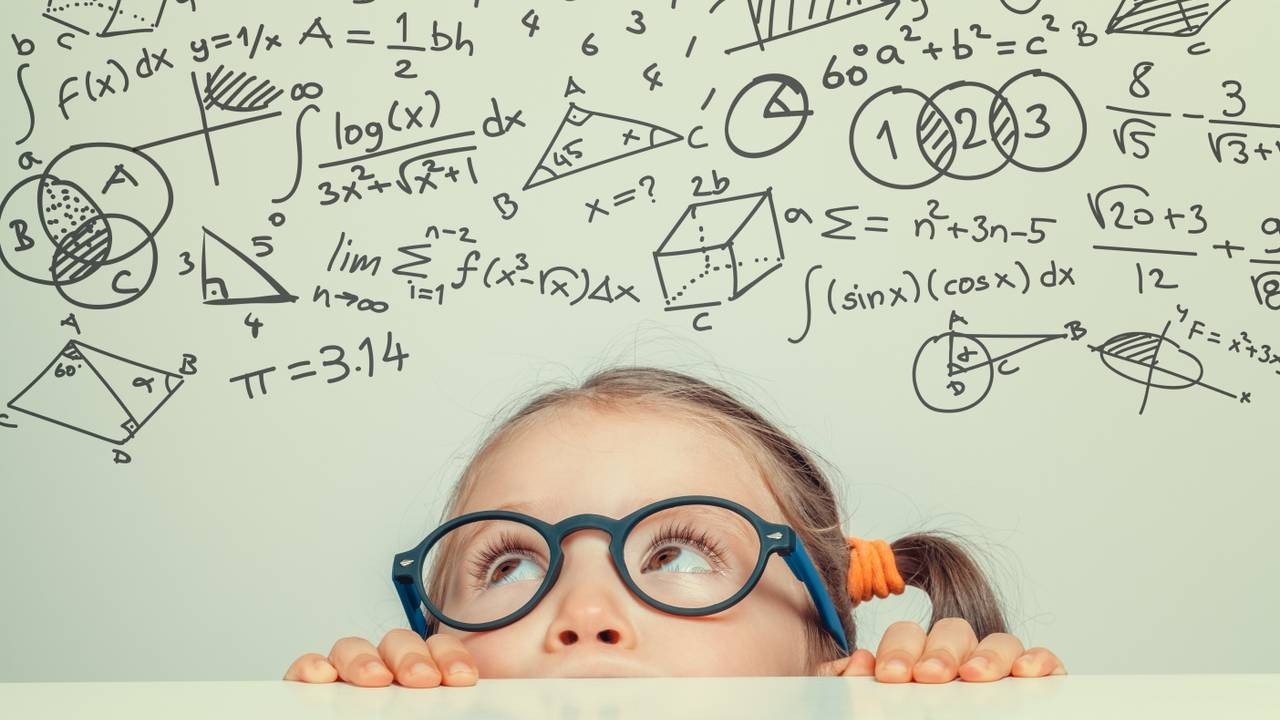Teaching Toddlers Math and Critical Thinking Skills Using a Homeschooling Curriculum-Part One

This is part one of a two part series about how to teach toddlers math and critical thinking skills. This week we will be discussing the need for toddlers to build a strong math foundation as well as some of the first steps in getting them comfortable with numerals, quantities, and number manipulation.
Math is All Around Us
It has always been important for children to learn math, but it has never been more important than it is today. The world is becoming increasingly digital, and the best jobs are increasingly dependent on understanding how to use technology. Furthermore, the ability to understand quantitative concepts such as logic, probability, and pattern recognition is increasingly important in a world where so much of our information is presented in the form of charts, graphs, and tables.
I always tell my daughters that my favorite thing about math is that it is black and white. Your answer is either correct or incorrect. One plus one is always two- in every language, in every country in the world. There is no way that someone can convince you the answer is three. It just simply isn’t.
We all want our children to have a strong foundation in basic math concepts, but it can be challenging to know how to get to that point. How do we go from holding this precious little infant with zero understanding of Math to sending our child off to school with an undeniably strong understanding of numbers, quantities, and logic? The answer lies in starting with a basic foundation.
Getting Started Teaching Toddlers the Basic Math Concept- Quantity
You might be wondering what to teach a two year old. Mastermind Early Learning program recommends beginning to expose children to quantities as young as 18 months. Quantities are presented in a quick burst- less than 1 second to be more specific. The quick presentation keeps the toddler’s attention as they don’t have time to get bored between each quantity that is being presented. We begin with quantities 1-10 not presented in order and then move on in intervals of 10. By starting at a young age and presenting on a regular basis- 2-3 times per day is ideal, children will gain an understanding of quantities and be able to instantly recognize quantities when presented in the world around them. As impressive as it can be to see a small child counting the tulips in the spring, imagine watching a child looking at the tulips and instantly knowing there are eight in the bunch.
As you watch your child grow in their understanding of quantities, allow them to explore quantities around them. My daughter loves exploring how many items she can fit into bags or how much of something we have. She loves surprises, so I often hide small amounts in bags or containers to give her a sense of surprise when she finds the quantity. She is also fascinated when I ask her to find quantities such as five potatoes or three blocks and will often run to get them when I call them out.
Connected Quantities and Numerals
Successful number manipulation- whether it be addition or subtraction, multiplication or division- begins with understanding quantities. More advanced math concepts cannot be understood without having a strong grasp on quantities. To show a child the equation 1+2 without any concept of what is behind those digits will lead to frustration for both the parent and child.
As your child is building a foundation in understanding quantities, we recommend to begin connecting numerals to those quantities. Numerals can be presented in the same fashion as the quantities- quick and sharp as to maintain focus. Allow your child to play with the numbers and quantities and allow them to begin connecting quantities with their numeral. Finally, you can begin to see the fruit of your labor!
Teaching Toddlers Basic Addition and Subtraction
After a child has a grasp on understanding quantities and connecting them with corresponding numerals, it is easy to transition into teaching basic addition. I’m often asked how I got my girls as toddlers interested in equations, and the answer is simple—teach them where they are. What is their favorite toy in the toy room…Is it lego blocks? Is it little toy cars? Is it baby dolls? Whatever your toddler’s favorite toy incorporate that into learning. You can add toy cars just as easy as adding dots on a paper, and you are more likely to have better results and attention when your child is interested in the subject.
Start with small quantities and work up to bigger amounts. Remember the goal isn’t for your child to be able to add 1+1 and have no concept of what they are saying. The goal is for your child to understand what that concept means. We want them to grasp the concept of number manipulation, so that when the numbers have extra zeros on the back, they are able to manipulate those numbers without hesitation.
Coming Soon- Part Two
Be sure to check back for part two of the series “Teaching Toddlers Math and Criticial Thinking Skills Using a Homeschool Curriculum.’ In part two of the series, we will be discussing additional math concepts such as patterns, logic, shapes and geometry, and measurement.
Looking for your toddler to instantly recognize quantities up to 100 and complete calculations, fractions, and problem sets? Check out Masterminds Early Learning’s curriculum. We offer seven unique subjects including Math and Critical Thinking. Our Math curriculum surpassing traditional learning outcomes of typical math programs offered. Our students learn to understand numbers and quantities in a way that far exceeds simply counting and identifying numerals to 20 before Kindergarten.

